Nakamise dori (なかみせどうり・仲見世通り) is a shop-lined passageway leading up to Sensoji Temple, Tokyo’s largest and oldest temple. The street is adorned with approximately 90 stores that primarily sell souvenirs and an array of Japanese snacks and sweets.
These shops were originally started by people in the neighborhood who voluntarily cleaned the streets and surrounding areas, and were later granted permission by the temple to serve tea and snacks for worshipers, and eventually permitted to open shops.
Sensoji Temple is located in a more traditional neighborhood called Asakusa, nestled in the city’s northern corridor. The area is famed for giving birth to and being home (still) to some of Tokyo’s classic, unique, and time-honored dishes and sweets.
Tokyo being the mecca it is to try all the Japanese foods to your heart’s content, Nakamise dori serves as a good starting point to get your feet wet and an entryway to explore deeper into Japan’s food culture. When you visit Nakamise, the idea is to graze, to try little bits here and there so that by the end you’re pleasantly full.
To get you started, here are some recommendations of some snacks to try when you find yourself strolling along Nakamise dori.
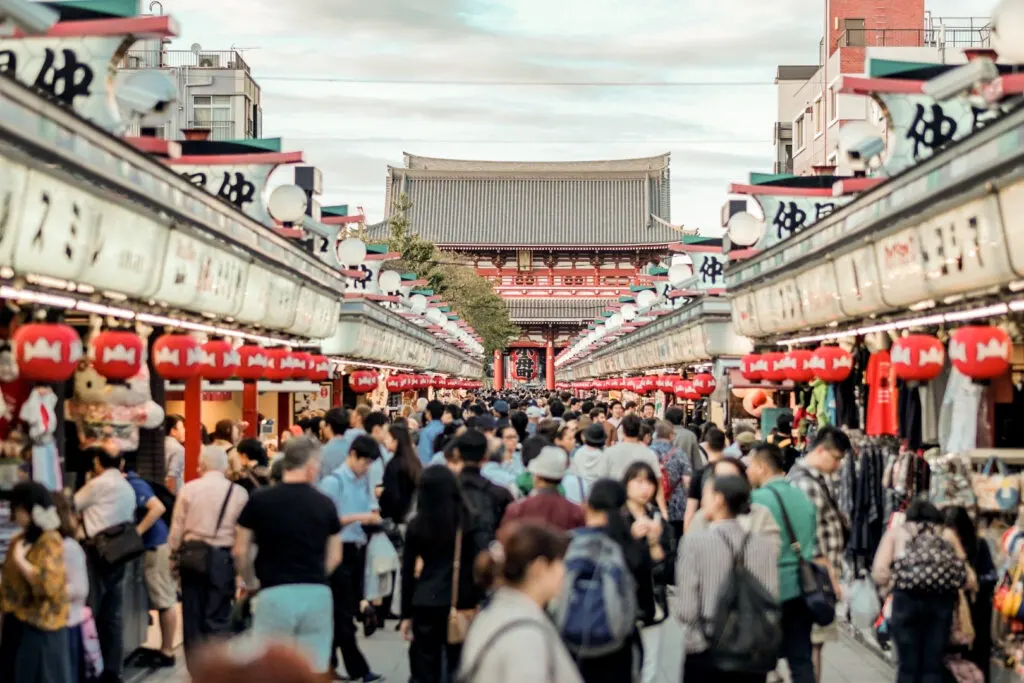
Table of Contents
Age (ah-geh) Manju
Whether you’re shopping in a convenience store or a high-end department store, you’re likely to find manju for sale. Manju is a steamed bun with filling, usually anko (sweet red bean paste), a traditional ingredient commonly found in many different types of Japanese sweets.
Age manju (あげまんじゅう・揚げ饅頭) is the fried version and makes for a great midday snack or morning “pastry” to accompany your coffee or tea. You’ll notice it has many textures to it when you take your first bite through the crispy batter through to the soft bun and into the smooth filling inside.
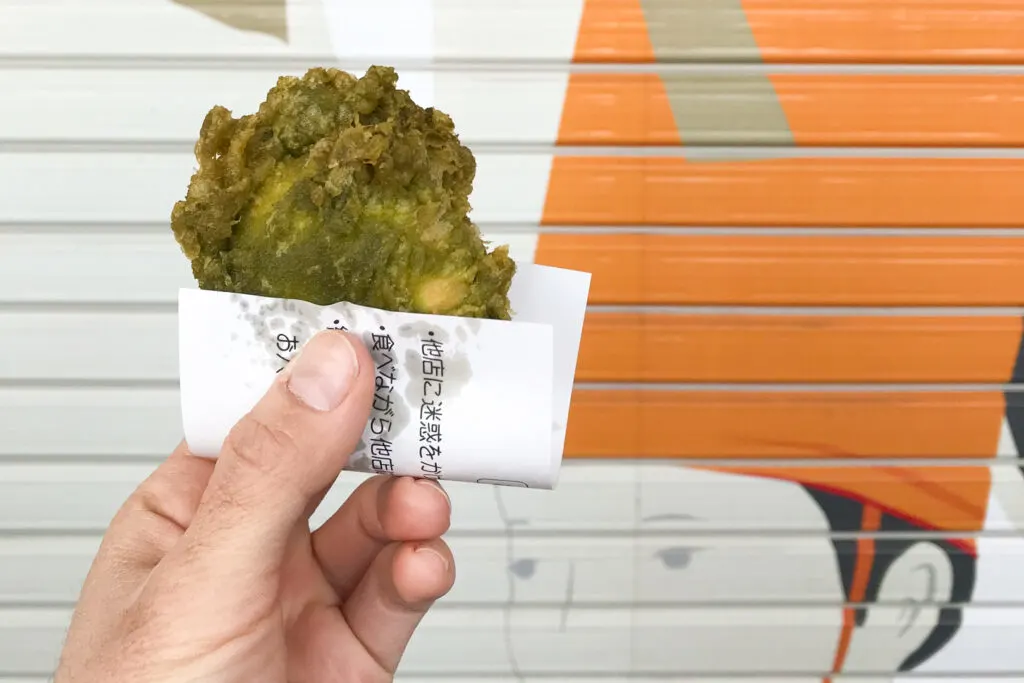
To get your Age manju, you’ll have to walk the entire length of Nakamise dori to a shop called Asakusa Kokonoe (浅草九重), the third closest shop to the main temple. Here you can choose from a variety of different fillings like matcha, chocolate, pumpkin, black sesame, cherry blossom, or even curry if you have a hankering for something more savory. My personal favorites are pumpkin and black sesame.
Address: 2-3-1 Asakusa, Taito City, Tokyo 111-0032
Ningyoyaki
In Japanese, Ningyoyaki (にんぎょうやき・人形焼) translates to “fried doll,” but that’s not really what you’re in for with these sweet, bite-sized treats. Ningyoyaki are palm-sized cakes made with a soft cake-like batter and filled with, you guessed it, sweet red bean paste.
Each shop uses custom molds with different shapes to make their Ningyoyaki, and on Nakamise dori, you can find Ningyoyaki in the shape of a pagoda, birds, dolls, and more.
If you head to Kimura Ningyoyaki (ハトのマークの木村家人形焼本舗), you’ll be able to watch the staff making them fresh on display. Ningyoyaki makes for an ideal snack because it’s the perfect hit of sweet after a meal to curb your sweet tooth.
Address: 2-2-5 Asakusa, Taito City, Tokyo 111-0032
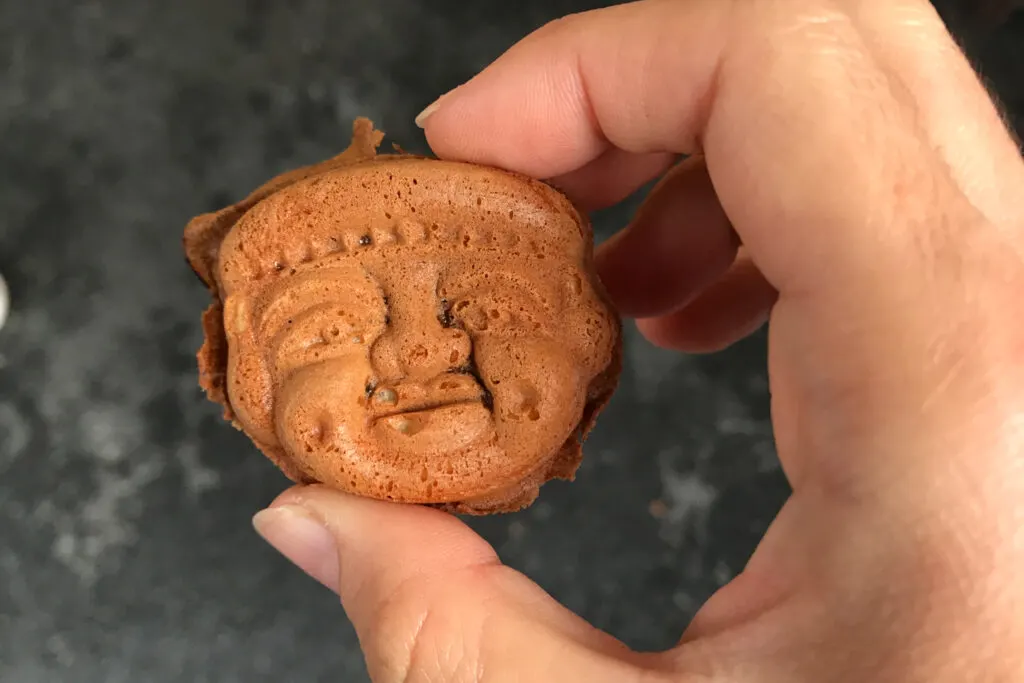
Daigaku Imo
In America, there are ice cream trucks that make their rounds through the neighborhoods, and in Japan, there are sweet potato trucks.
Japan is famous for its range of different sweet potatoes. There’s even an annual festival dedicated to it.
One of the lesser-known sweet shops on Nakamise dori to visitors is Oimoyasan Koshin (おいもやさん興伸) whose #1 best seller is daigaku imo (literally ‘university potatoes’) or sweet potatoes fried in oil and doused in honey. This candied snack is decadent but delicious! They offer a sweet potato tart that is mighty tasty as well.
Address: 1-36-6 Asakusa, Taito City, Tokyo 111-0032
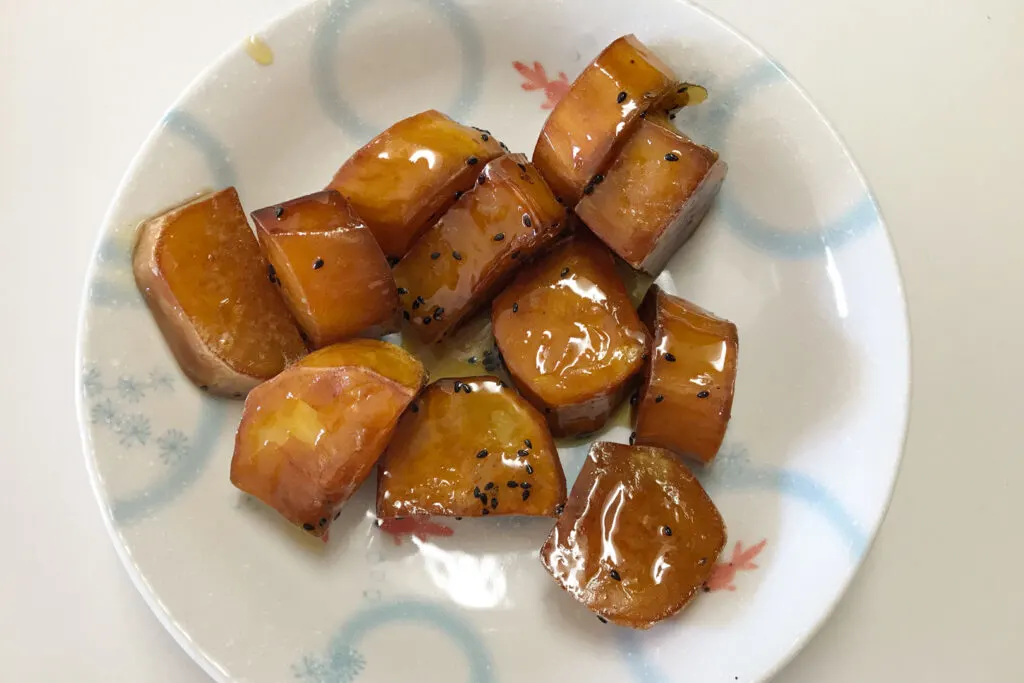
Melon Pan
Melon pan (メロンパン), otherwise known as melon bread, is a staple you’ll find in Japanese convenience stores for when you need quick carbs.
Don’t be fooled, the melon flavor is very subtle and more often than not non-existent. Melon pan gets its name from its supposed rock melon-esque shape, not its taste, but some bakeries (like the one I’m about to introduce you to) do add melon extract for just a hint of its namesake.
Melon bread is not overly sweet and absolute heaven when served fresh from the oven. It has a bit of a crunch when you first bite in quickly giving way to a fluffy, soft interior.
Many shops are now upping their game using melon bread for ice cream sandwiches or dessert burgers. The only place to go, in my opinion and heart, is Kagetsudo (浅草花月堂). Their bread is always fresh, and their staff always have a great sense of humor.
Address: 1-18-11 Asakusa, Taito City, Tokyo 111-0032
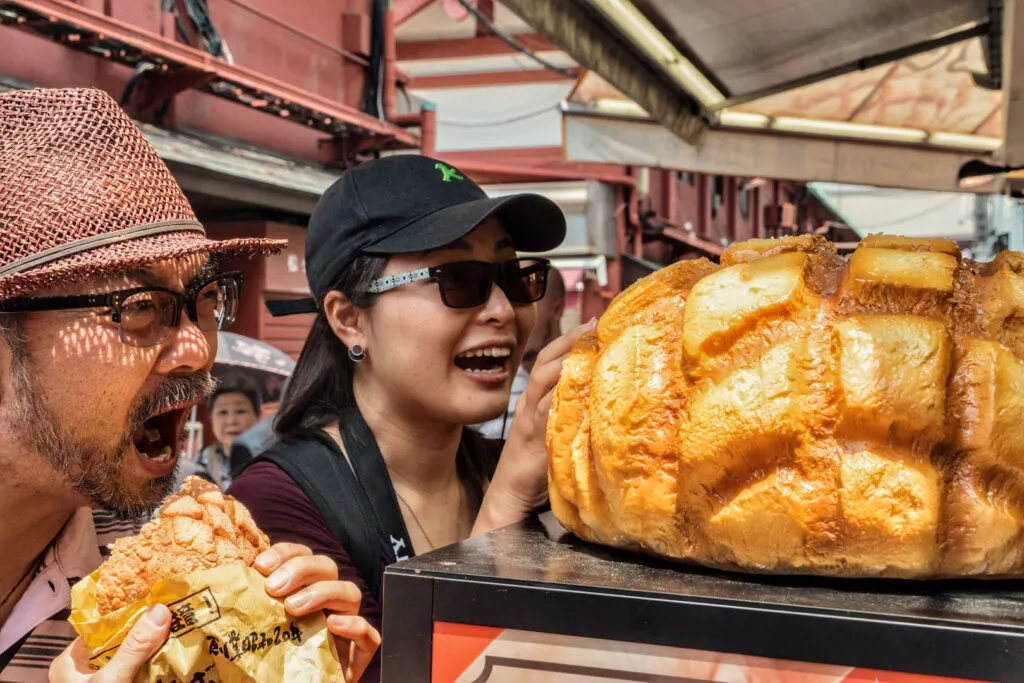
Kurogoma-mame
So, by now you may have noticed that Japan loves their bean-centered sweets, and I’m going to ask you to stick with me here.
There is a snack called Kurogoma-mame (くろごままめ・黒ごま豆). ‘Kurogoma’ is black sesame and ‘mame’ is bean. They are crunchy white beans with tens of layers of sweetened black sesame powder, and oh my goodness if I wasn’t eating a pack of these a day.
They’re so easy to snack on on-the-go, and one portion comes beautifully packaged in Japanese wrapping paper. They’re crunchy and sweet, but not overly decadent, making them the perfect snack.
These beans are not as easy to come by in stores so when you’re perusing Nakamise dori, stop into Karinkoron (浅草かりんころん) and pick up a pack. They also have matcha flavored ones which are equally delightful.
Address: 2-2-4 Asakusa, Taito City, Tokyo 111-0034
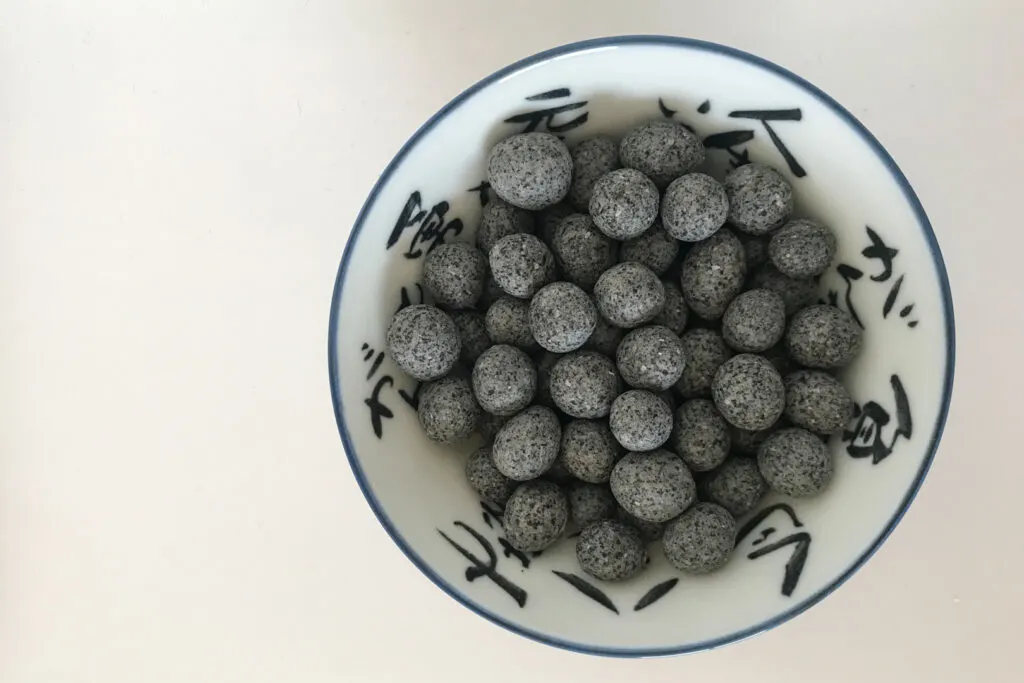
Matcha Tiramisu
Matcha is a high-grade green tea finely ground into powder. Not only is it common to make tea with, but it’s a favorite flavoring used in all kinds of desserts.
To begin making a dent in your matcha dessert explorations, head to Yanagi Chaya (やなぎ茶屋). They have all sorts of matcha flavored sweets on offer like soft serve ice cream and milk tea, but the matcha tiramisu is by far my favorite. It’s rich but not too sweet.
As you explore Japan, you’ll find that restaurants and bakeries like to take desserts from different corners of the world and put their own spin on them, and that’s what we have here. A nod to one of Italy’s finest desserts with a Japanese spin.
Address: 1−30−6 Asakusa, Taito City, Tokyo 111-0032
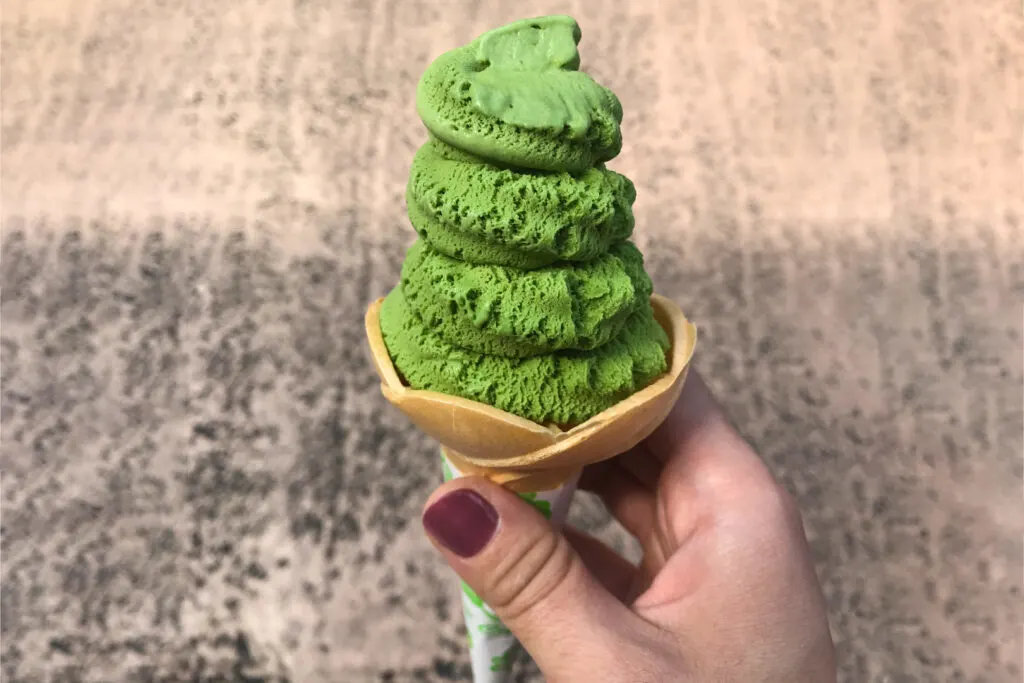
Would you like to visit Nakamise dori? Now that you have some sweet options to consider, which treat will you try first?
Looking for more culinary delights near Nakamise dori? Get your very own custom blend of shichimi togarashi (Japan’s 7-spice mix) just a few steps away in the adjacent shopping arcade.
Pin me for later
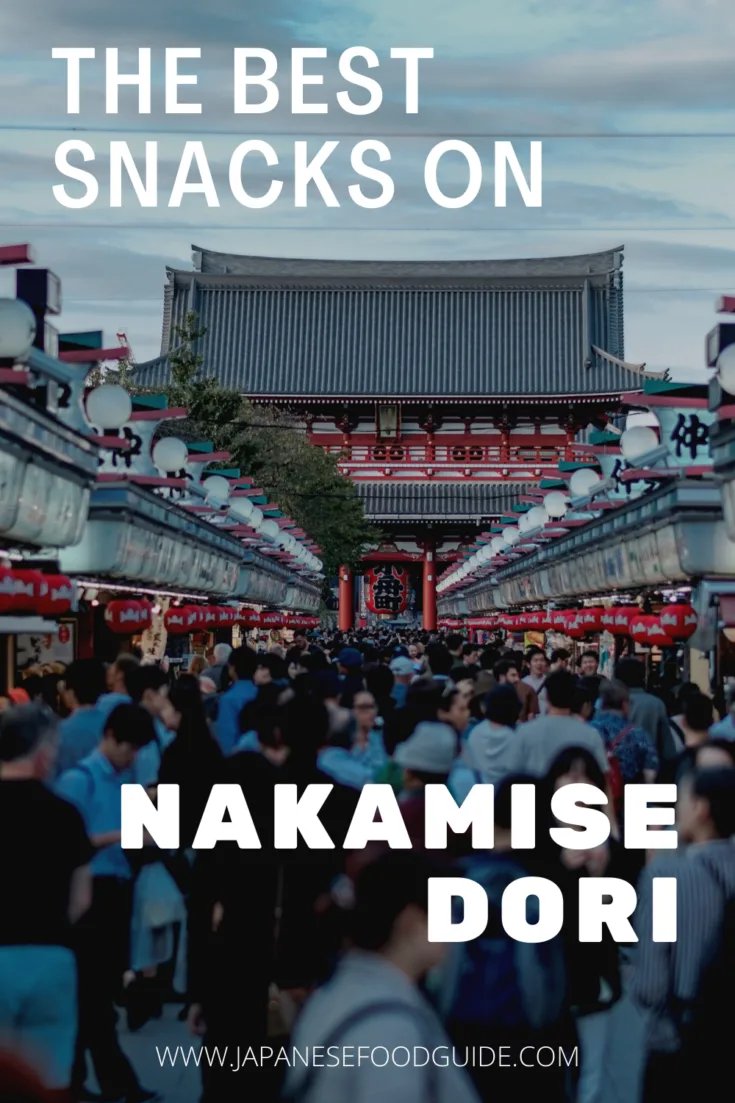
Currently, she lives in Michigan and is transitioning into a career in UX Design.
